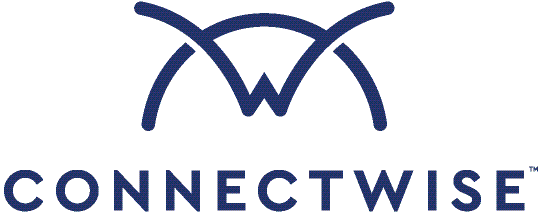ChannelPro’s editorial team conducted an interview with Ciaran Chu, general manager of ConnectWise ScreenConnect, which has been edited for clarity.
How can MSPs best support SMBs in their digital transformation journey, especially considering that 80% are not fully utilizing digitization? What are the common challenges?
The main challenge I see is that SMBs are in the boardroom, while MSPs are still in the server room. SMBs don’t fully understand what’s possible or the potential benefits an MSP can offer them. MSPs historically have struggled to effectively explain technology using vocabulary that resonates with SMBs, namely defining the outcomes of using technology to improve productivity, efficiency, and profitability.
Consequently, SMBs are focusing their efforts on the challenges of running their business, which in the face of inflation and other publicized headwinds means they often view technology — and by extension, their MSP operators — as cost centers that need to be squeezed to improve margins by skipping upgrades and reducing projects.

Ciaran Chu
MSPs then get caught up in defending costs while simultaneously struggling with inflation and the rising cost of salaries in attracting talent. MSPs often are reliant upon subject matter experts who have a lot of customer knowledge, which may not be scalable and can become time- and resource-intensive, as opposed to trying to sell more services or win new business. Additionally, these MSPs and subject matter experts often are technology experts who may not have core sales and marketing competencies.
However, the democratization of technology with the breakthrough of solutions in cloud, AI and cybersecurity offer a chance to reset this paradigm and drive digitization, as technology is now an increasingly important topic in the boardroom. One example of this is the explosive growth of ChatGPT, which wasn’t necessarily new technology but resonated as everyday users realized the value they could attain by typing in simple questions.
MSPs need to capitalize on this opportunity by sitting down with SMBs to understand their key business problems and outline what can be possible using technology to drive quantifiable changes that solve real business problems. Creating a roadmap that both sides can trust and execute is what will drive digitization and, by extension, value through increasing productivity, revenue, and profitability.
What enterprise-grade tools do you recommend for SMBs to remain competitive, and how can MSPs effectively integrate these tools into SMB operations?
Its important to recognize that technology exists to solve business problems and SMBs differ from enterprises in that they don’t have the people, skills, process maturity, or revenue to operate in an enterprise manner. The operational processes of the technology probably are even more important than the technology itself to avoid the technology shifting from being a business problem solution to being a problem in running the business.
The sweet spot for SMBs are on-demand tools that can be used with little operational oversight and are implemented in a way that allows them to mature and scale their businesses. The advent of cloud and evolution of marketplace and SaaS offerings have been key as these developments have democratized technology by allowing SMBs to consume features without having to run all the operations and complexity themselves.
Classic examples of key SaaS tools for SMBs are customer acquisition, financial and accounting systems, data analytics, security and authentication, website hosting, ticketing, patching and monitoring, and people management.
Two key areas of technology that will grow in importance as digitization further takes hold will be AI, especially in the lead generation, content creation and regulatory certification spaces, smart-contracts, as well as robotic process automation (RPA) to help streamline repetitive efforts and most effectively deploy resource and capital.
The important thing to remember in how MSPs integrate these tools is ensuring that they are designing solutions that can evolve with the business — a big attraction of marketplace SaaS offerings — and stay true to using technology to solve a problem that the SMB is facing.
Finally, the importance of documenting and understanding the as-is processes today cannot be overstated. Without understanding how the business operates today and where areas of improvement may be, it becomes very difficult to truly leverage the power of AI and technologies like RPA.
Could you elaborate on the role of cloud and AI in SMB digital transformation? How MSPs can leverage these technologies for their clients?
Cloud has democratized technology in the sense that’s what previously may have taken months to install and armies of resources to manage can now be deployed in seconds and run off of automation.
One area MSPs can leverage these technologies is using them to get out of the server room and into the boardroom to engage in meaningful business conversations with SMBs. For example, MSPs can provide further education on the economics of cloud computing to transform the SMB cost base as well as how to eliminate manual processes to increase profitability. AI has added to this mix as by storing the data more holistically. There is opportunity to leverage large language models (LLMs) to improve processing patterns, giving MSPs a better view of their partners’ estates to mitigate risks and offer potential additional services. This elevates the MSP’s role from a reactive tech supplier that is worried about finding enough resources to patch aging servers to being a trusted adviser that can help end users transform their businesses by using the right technology to increase profitability and evolve their cost base.
A second educational area for MSPs has to do with most precious commodity: their resources. Many may be fearful of driving increased automation and what that means as far as a loss of control or even a diminished need for MSPs overall. The reality is that the World Economic Forum has predicted a shortage of over 85 million technical resources in the next 10 years, so it’s more important for MSPs to consider how technology can be used to elevate their position as tech advisers rather than just tech support.
How can MSPs transition from a traditional tech support role to a more holistic business adviser for SMBs?
For MSPs to be considered as more of a tech adviser, they need to understand the business problems that an SMB is facing and provide effective solutions that deliver tangible results in a short time.
Another example here moves beyond reducing costs and toward overall business transformation and the increasing the compliance required to win and maintain business. Using new technologies like AI can automate the certification and accuracy of compliance, which will only increase as the world becomes more digital. The likes of National Institute of Standards and Technology (NIST), Cyber Essentials and Essential Eight not becoming entwined with cyber insurance show this is likely to increase, and will become a bigger barrier to winning and protecting business at the required margin. Leveraging cloud automation and AI to reduce these activities frees up more time for MSPs to demonstrate their value.
How should MSPs measure the success of digital transformation efforts in their SMB clients?
By constructing a digital roadmap that charts how technological investments are tied to business growth and value, and then successfully delivering on this roadmap. It’s crucial to quantify value to retain their SMB partnerships and increase the margin on this work over time.
What are some key takeaways or advice for our audience?
The main takeaways I’d offer are:
- Prioritize moving from the server room to the boardroom through technological explanations that resonate with SMB audiences.
- Engage with SMBs to identify their top problems by asking open questions to find pain points, and once this has been established, produce solutions that clearly address this pain.
- Take a leaf out of the SMB book and understand how digital technology can improve the MSPs maturity in driving more leads, better margins, and more value for the MSP to grow profitability.
Image: iStock













